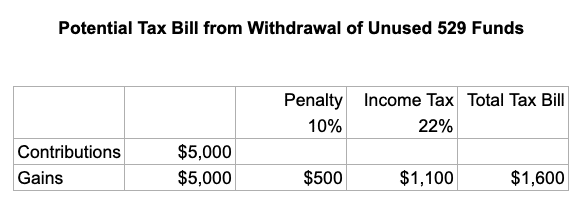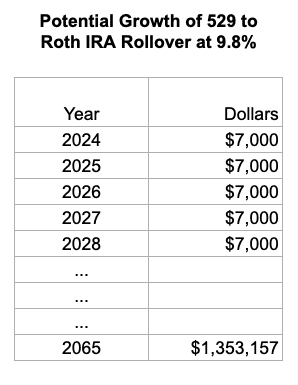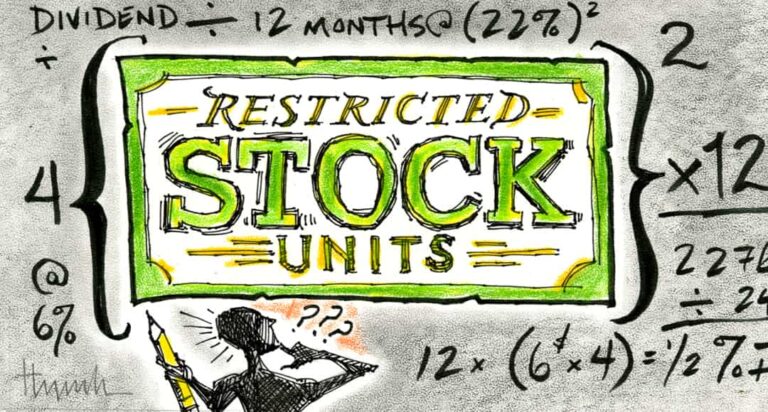
State-sponsored 529 plans are a terrific tax-advantaged vehicle to fund the higher education of a loved one. However, some owners of 529 plans whose beneficiaries go to state universities are dealing with overfunding issues. For example, Florida currently has the lowest average yearly in-state tuition of $4,463 at public institutions. Additionally, the Florida Bright Futures scholarship can cover 75% to 100% of tuition costs and fees, with over 950,000 students receiving the award in 2023. Leftover money is certainly a good problem to have, but what exactly can you do with unused 529 funds? Let’s discuss your potential courses of action, including a new option introduced in 2022 with the SECURE 2.0 ACT.
What Happens if You Withdraw Unused 529 Money?
A 529 plan is an investment account that allows after-tax funds to grow on a tax-deferred basis and eventually be withdrawn tax-free for qualified education expenses. The main drawback of a 529 college savings plan is that any earnings withdrawn for non-qualified education expenses will be subject to a 10% withdrawal penalty AND federal and state income taxes.
For example, let’s say you deposited $5,000 into a 529 account years ago, and it grew to $10,000, but the intended beneficiary no longer anticipates education expenses. If you withdraw the full amount and are in the 22% marginal income tax bracket, you will pay $1,600 in penalties and taxes.

One caveat is that if the beneficiary receives a qualified scholarship, such as Bright Futures, you can withdraw the scholarship amount for non-qualified expenses with no penalty. However, you will still have to pay income tax on the earnings.
3 Tax-Efficient Ways to Use Leftover 529 Funds
Although having excess 529 funds is a fortunate predicament (that many Americans wish they had), it is still worth exploring tax-efficient options. Fortunately, there are several.
1. Use the Money for Graduate School
Explore whether the intended beneficiary has any ambition for further graduate education. While they may be tired of school upon completing their undergraduate degree, they may feel differently after working for a few years. If the current beneficiary would consider pursuing an MBA or another advanced degree someday, leaving the funds in their name where they can continue growing tax-deferred might be your best option.
2. Change the Beneficiary to Someone Else
If the current beneficiary of the account has no further education ambitions, next consider if other qualified family members, such as the beneficiary’s sibling, could use these funds for their education. While only one beneficiary can take distributions from a 529 in a given tax year, you can change the beneficiary to another qualified family member in future tax years at no cost.
Another possibility is to save the funds for a potential new beneficiary. Since there are no age or time limits for using a 529, you could leave the money where it is until you have someone to transfer it to. For example, if your child is the current beneficiary of your 529 plan and does not plan to use the funds, you can keep the account in their name until they have a child. At that point, you can change the beneficiary to your grandchild, allowing for generational education planning with no additional costs.
3. 529 to Roth IRA rollover
A new option for unused 529 plan funds, with the introduction of the SECURE 2.0 ACT in 2022, is a 529 to Roth IRA rollover. This change to the tax code creates an exciting new choice for unused 529 funds. You can use them to jumpstart the beneficiary’s retirement savings!
A Roth IRA is an individual retirement account funded with after-tax dollars that allows the money to grow tax-free forever or until you make a qualified distribution. Under these new rules, you can rollover funds from a 529 plan into a Roth IRA tax and penalty-free subject to the following limitations.
- The annual rollover amount is subject to the IRA contribution limit (which is $7,000 in 2024). In other words, you cannot combine rollover and direct contributions to exceed that limit.
- The 529 beneficiary must also be the Roth IRA account owner and must have earned income at least equal to the amount transferred in any year.
- The lifetime 529 to Roth IRA rollover limit is $35,000.
- The 529 account must be open for at least 15 years before a Roth rollover request, and any 529 contributions made in the five years preceding the rollover are ineligible.
Consider the following example to see how powerful a 529 to Roth IRA rollover can be for a young beneficiary.
Johnny created a 529 plan many years ago for his daughter, Sue. Sue is 24, has graduated from college with $35,000 left in her 529 plan, and has no future anticipated education expenses. She decides to roll over the maximum annual limit of $7000 in 2024, 2025, 2026, 2027, and 2028 to reach her lifetime rollover limit of $35,000. Assuming these funds grow at 9.8% (the average annual stock market return 1928-2023) and Sue retires at 65, she could have $1,353,157 tax-free to fund her retirement needs from these 529 to Roth IRA rollovers alone.

Is a 529 to Roth IRA Conversion Right for Me Today?
As demonstrated above, rolling over leftover 529 money to a Roth IRA for a beneficiary can be a fantastic way to help them start saving for retirement. Unfortunately, the wording of the SECURE 2.0 ACT has created significant uncertainty. For example, regarding the 15-year wait requirement between opening a 529 and executing a Roth rollover, Congress’ language is as such:
“a distribution from a qualified tuition program of a designated beneficiary which has been maintained for the 15-year period ending on the date of such distribution.”
That leaves us wondering. If the owner changed the beneficiary at some point, does that reset the 15 years?
At this point, the guidance is unclear and open to interpretation. Congress has promised to release clarifications before April 2025 that will make proceeding with the strategy much clearer. A 529 to Roth IRA rollover is logistically possible, as Golden Road Advisor’s custodian Raymond James and the state of Florida both allow for 529 to Roth IRA rollovers. However, unless your situation is very straightforward, we would advise you to wait. We would consider a straightforward 529 to Roth IRA rollover as:
- The 529 beneficiary or state program has not changed in the last 15 years.
- No partial withdrawals followed by matching contributions have occurred in the last five years
- The 529 beneficiary and owner both have earned income in the given tax year
- The 529 beneficiary has not contributed to any individual retirement accounts in the given tax year
- The 529 beneficiary has no desire for further education
There is no deadline to roll over 529 funds to a Roth IRA, so it is not urgent to act until Congress provides clarification. Regardless, if you are considering this strategy, you should consult with a tax professional or financial adviser regarding your specific circumstances.
The Bottom Line: Make the Most of Unused 529 Funds
Attending college is expensive, so college savings plans, like 529 accounts, are a wonderful way to protect your loved ones from crushing student loans. Yet, knowing how much you will need is nearly impossible, so overfunding issues are more common than you might think. Although we understand the temptation to cash out any leftover funds, doing so could result in a tax and penalty bill. Use the guidance above to think through your options, or ask us for help determining the best choice for your situation.
Disclosure: The information provided is for educational and informational purposes only and does not constitute investment advice and it should not be relied on as such. It should not be considered a solicitation to buy or an offer to sell a security. It does not take into account any investor’s particular investment objectives, strategies, tax status or investment horizon. You should consult your attorney or tax advisor.
Author
-

Brady Wright is a Financial Planning Associate at Golden Road Advisors. Brady earned a BS in Business Administration, Finance, and a minor in Wealth Management from the University of Florida’s Warrington College of Business. He is also currently pursuing the CERTIFIED FINANCIAL PLANNER™ (CFP®️) designation.
View all posts



